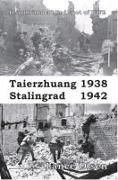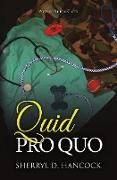Taierzhuang 1938 - Stalingrad 1942
BücherAngebote / Angebote:
Questions crucial to the development and outcome of WW2 are a blind spot in the conventional wisdom on, and histories of, WW2:Why did Japan invade China and what difference did it make to WW2?Japan intended to invade Siberia (USSR) at the time of Operation Barbarossa but attacked Pearl Harbor instead - what made Japan change its target?What saved Russia (USSR) from having to fight - and being defeated in - a 2-front war against Germany and Japan at the same time in WW2?Japan's attack on Pearl Harbor forced the US to join the war against Japan and Germany in WW2 - what made Japan attack the US (Pearl Harbor) instead of the USSR (Siberia)?This saved the USSR from having to fight a 2-front war. And it forced the US into joining China, the British and the USSR in the war against Japan and Germany. This decided the final alignment of belligerents in WW2 which ultimately decided the result of WW2."Taierzhuang 1938 - Stalingrad 1942" provides an insight into the blind spot in histories of World War 2 - the Sino-Japanese War. Lance Olsen addresses the elephant in the room in histories of WW2, focusing on the Battle of Taierzhuang.Japan contrived the Mukden Incident to invade China in September 1931 starting the war in Asia. Germany contrived the Gleiwitz incident to invade Poland in September 1939 starting the war in Europe. In a desperate bid to break the stalemate in China, Japan extended the Sino-Japanese War into the Greater East Asia War by attacking British and US territories in East Asia and the Pacific, including Pearl Harbor, in December 1941 - merging the wars in Asia and Europe into a worldwide war of Axis versus Allies. This book puts it all into perspective.In WW2, the basis of British and US strategy was Europe First or Germany First, but the elementary factor of the victory of the Allied Powers against the Axis Powers was - attrition - first deliberately applied at Taierzhuang. The major portion of Japan's military might was consumed in China and similarly later the major portion of Germany's military might was consumed in Russia. The Nanjing Massacre in China foreshadowed the Holocaust in Europe. Japan had its "Kill All", "Burn All" and "Loot All" (¿¿¿¿) Policy in its Holy War (Seisen) in China, Germany had its "Einsatzgruppen" (death squads) in its Operation Barbarossa in Russia. Japan was waging Holy War by divine commandment in invading China - hence, the use of terror (for example: the Rape of Nanjing) and suicide bombing (Kamikaze) attacks. Again, this book puts it all into perspective.However, Stalingrad is often pointed out as the turning point of World War 2, but Taierzhuang 1938 - the model for Stalingrad 1942 - is in the blind spot of WW2 histories.This book provides a detailed insight into the Battle of Taierzhuang: how a hodgepodge of troops inferior in almost every aspect - crushed elite divisions of crack troops superior in logistics, training, equipment and weaponry. It points out the startling similarity in the modus operandi for victory between it and the Battle of Stalingrad 4¿ years later.
Folgt in ca. 15 Arbeitstagen

